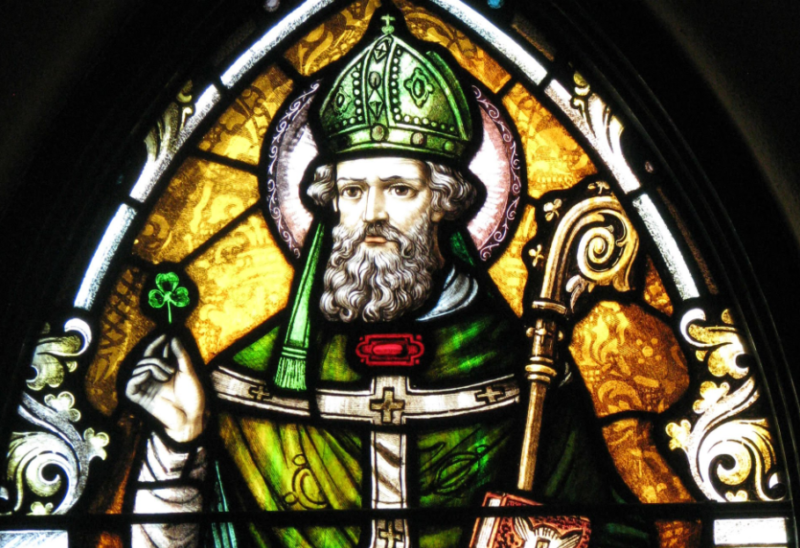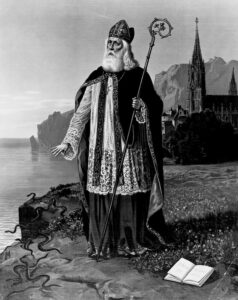Support our authors
DonateSt. Patrick the Patron Saint of Ireland

What is a Patron Saint?
It is estimated that every 17th March, thirteen million pints of Guiness are drank world wide. Thirteen million! That is a huge amount! What is so special about the 17th March I hear you ask? Well, this is St. Patrick’s day, so called to mark the day the real St. Patrick died. St. Patrick is the Patron Saint of Ireland and as Guiness is the Irish national drink, this causes the spike in Guiness sales.
This got me wondering, what do you have to actually do to become a Patron Saint? I mean it seems a pretty sweet gig. Let’s look at some of the perks:
- Be remembered for all of eternity.
- Get a cool title in front of your name.
- If there is an afterlife, being a Saint must be like a VIP queue jump.
It turns out there is a Patron Saint for everything. There is a patron Saint of the Internet. There is a patron Saint of unattractive people and there is even a Patron Saint of Sexually Transmitted Diseases.
Welcome to my first blog post in a mini-series on Patron Saints and their backgrounds. Today we will be looking at St. Patrick, the Patron Saint of Ireland.
St. Patrick’s arrival onto the scene
I vented recently in a blog post about Francis Drake in which I complained about the record keeping in Victorian times. I complained that records only seemed to be kept for people of noble birth. This caused a problem when a lowly born commoner had the audacity to do, say, or become, someone of importance. St. Patrick was certainly completing missionary work in Ireland during the fifth century and when I say certainly, I mean probably. It may have been late fourth century.
I’m not going to get overly laden with Historical facts about St. Patrick. Instead, let’s take a look at some of the good stuff, let’s take a look at some of the legends.
(Disclaimer: Whilst all of these legends are backed up by sources, they are ropey at best. Where I assert certain events have happened for the purpose of narrative, this is because they have been recorded in some kind of source, it may not have happened…)
St. Patrick and the Snakes
 St. Patrick is credited for having driven all of the snakes out of Ireland. During a forty day Fast, high atop the beautiful Mount Croagh Patrick outside Westport in County Mayo, he was attacked by a nest of snakes. Courageously St. Patrick, invoking the name of God, chased the snakes into the Eastern sea forever banishing them from Ireland’s shores.
St. Patrick is credited for having driven all of the snakes out of Ireland. During a forty day Fast, high atop the beautiful Mount Croagh Patrick outside Westport in County Mayo, he was attacked by a nest of snakes. Courageously St. Patrick, invoking the name of God, chased the snakes into the Eastern sea forever banishing them from Ireland’s shores.
It is true. There are no snakes in Ireland. It doesn’t seem likely though that St. Patrick banished them from the land. Gaius Julius Solinus, a Latin geographer writing in the third century, observed there were no snakes living in Ireland. This was around two centuries before St. Patrick was completing his missionary work. A number of geologists and naturalists have concluded that the glacial country of Ireland was either under ice or simply too cold for snakes.
The story has a lot of strong symbolism. Scholars have referenced Exodus 7:8, drawing similarities with Moses’ staff turning into a snake. It is thought the snakes may represent the non-Christian pagans living in Ireland that St. Patrick’s chased away under his flag of Christianity.
St. Patrick in the Wilderness
St. Patrick and the snakes is not the only one that bears resemblance to the story of Moses. There is also St. Patrick’s time lost in the wild, which definitely has similarities to the story of Moses and the Israelite’s and their time in the wilderness.
St. Patrick at the age of sixteen was captured by pirates and sold into slavery. He remained a slave for six years during which time he converted to Christianity, worked as a shepherd and fell in love with his faith. One evening, he managed to escape his captors and made his way across the Irish country side. No easy feat as the punishment for harbouring an escaped slave would have been severe, the punishment for St. Patrick himself could have been death.
After three days he reached the coastline and with difficulty managed to convince a Captain to grant him passage. It is unclear why, probably due to a storm, the ship was forced to make an emergency docking on the coast of England.
The entire crew walked with St. Patrick for 28 days. As they became faint with hunger, they decided to prayer. Suddenly, as though manna from heaven, a herd of wild boar ran across their path. They were saved.
The Shamrock
St. Patrick lit a fire on top of the hill Muirchu moccu Machteni in defiance of High King Laoire. The fire was eternal, like St. Patrick’s faith and could not be extinguished. St. Patrick explained about The Father, Son and Holy Spirit using a three leafed clover as a metaphor.
